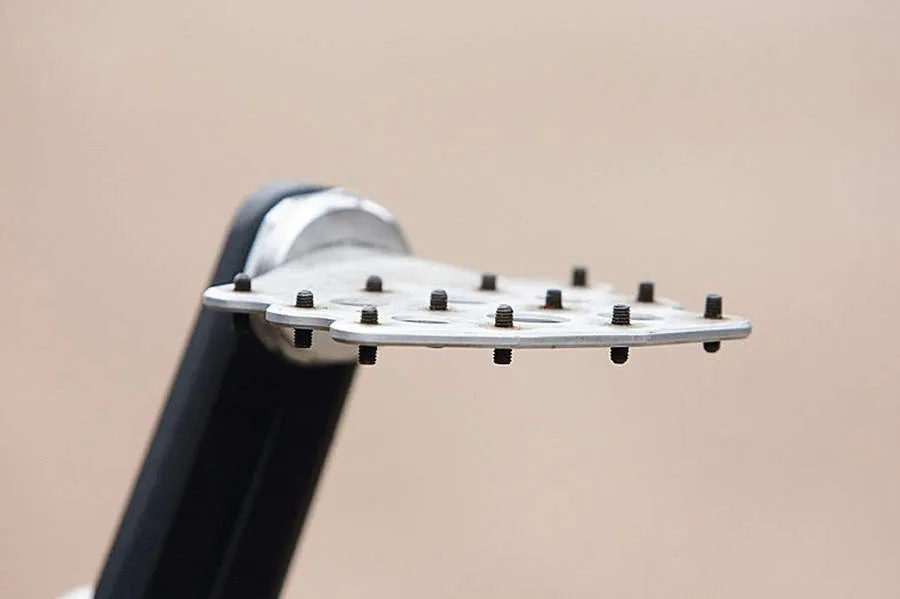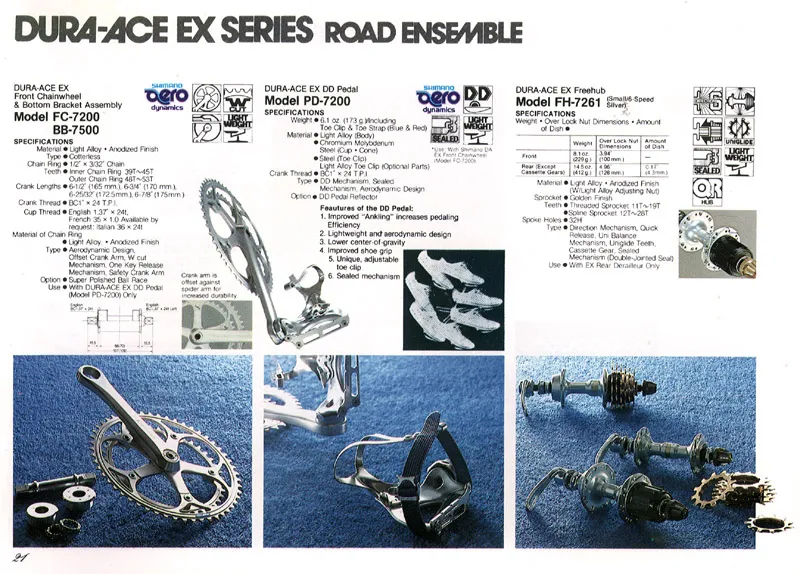They say there’s nothing new in bike technology. But it still surprises me when really unlikely ideas get resurrected.
Exhibit A, MomentumBicycle FlyPaper Pedals. These startling mountain bike pedals have a very thin body, achieved by scrapping the conventional axle design and moving the bearings into an over-sized thread. You have to use specially modified cranks with them, but they boast a lower profile than a former bank chairman.

The benefit is that your foot’s lower at the bottom of the pedal stroke, so you can drop your saddle, lowering the centre of gravity of the whole bike and rider combo. According to reviewer Rob Weaver, that makes for better cornering off-road, a finding that certainly makes sense.
And the raised bottom edge also improves ground clearance, so a frame designer could lower the whole bike even more if he were willing to design around one particular pedal/crank system. Alternatively, slap them on your current bike and you’re less likely to smack rocks and roots, and downhill racers can start pedalling earlier out of corners.
Designer Dean Williamson says the idea is also to provide a more stable foot platform, and the idea came from the original Atomlab Aircorp pedals, which were much thinner than anything else available at the time.
Dean found that the Aircorp's thinness made for a better pedalling feel and a longer power stroke, and he got to thinking about ways to make a pedal thinner still. He rapidly realised that Atomlab's pedals couldn't be made any thinner and that they were so pared down that they had reliability problems (since fixed, we understand).
Lightbulb! Move the axle and bearing out of the way. "If we could just get the axle and bearings out of the middle of the pedal body, and into the end of the crank arm, the pedal could be much thinner!"
Six-and-a-half years of development followed, which Dean detailed in a long, brilliantly boffiny email which I'll bring you in another post in a couple of days.
It’s unarguably a smart design, and if it takes off – which I suspect is going to require a couple more crank makers to be persuaded to make cranks to fit the pedals – it could be a little revolution.
However, it’s not entirely new.
Exhibit B, your honour, a page from Shimano’s 1982 road bike component catalogue.

Shimano’s Dura-Ace EX Dyna-Drive pedals were intended for road bikes but the design was similar to FlyPaper pedals. The bearings were inside a one-inch axle, with the platform cantilevered off it. They needed special cranks.
Shimano were more interested in lowering the rider than gaining ground clearance, so the pedal was offset downward. Shimano claimed this had biomechanical benefits, because the ball of your foot was next to the pedal axle.
Dean didn't encounter the Dyna-Drive design till he had come up with the Flypaper. "Although the FlyPapers share some similarities with the Shimano Dyna-Drive pedals, they were not even anything I was aware of, until after we made the first prototypes of the FlyPapers, and then started doing a patent search," he says.
In fact, if he had found out about them he might not have taken the idea any further. "It is probably good that I didn't know about them," he says. "If I had, I may have given up on the idea, thinking that A: it's already been patented, and B: it must not work very well."
Dyna-Drive died because the bearings reportedly didn’t last very long and were hard to service. It also didn’t help that the pedals had hard-to-find special toe-clips (the metal cradle used to keep your foot in place in the days before clipless pedals). If you broke a toe-clip at a race weekend in the boonies, you might end up replacing the pedals and cranks to get going again.
The biggest difference between 1982 and now, though, was that Shimano were a much smaller player in a much smaller and less diverse bike component world. Shimano had no chance of going it alone with a new pedal standard and nor did anyone else. We’re also much more accustomed now to the idea of components working as a system.
All of which bodes well for Momentum, who’ve hit upon a good idea that deserves a revisit. I wonder when they’re going to do a clipless version for us wheels-on-the-ground types.